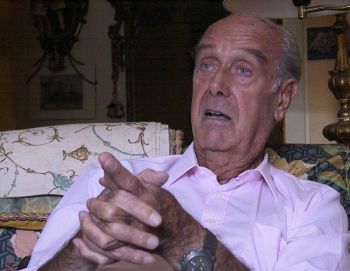 |
|
Pierugo Gobbato, a
talented engineer turned executive who was
known for constantly striving to push the
boundaries of engine technical development,
best-known as ‘father of the Stratos’ during
half a decade in charge of Lancia, has died
in Turin at the age of 90. |
|
|
|
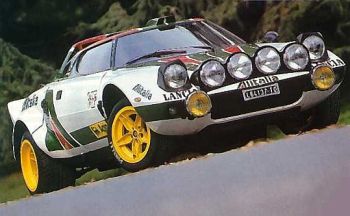
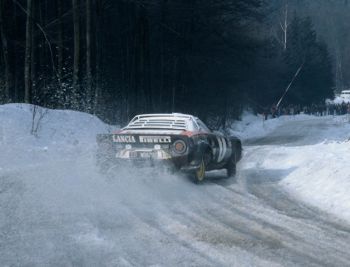 |
|
The Stratos opened up a glorious new chapter
that would lead on to the 037, Delta S4 and
Delta Integrale, and three decades of
stunning rally success at the very highest
level that returned the marque to its
rightful position of global admiration,
cementing rally competition excellence into
its DNA. |
|
|
|
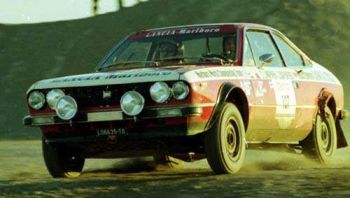 |
|
As well as being a
commercial success, the Beta Coupe also formed an
integral part of Lancia's rally efforts
during Gobbato's stint heading the Turinese
marque. |
|
|
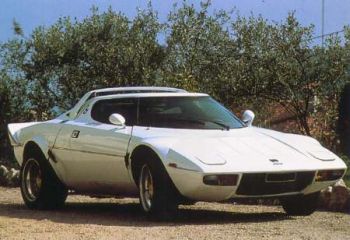 |
|
The amazing Lancia Stratos is the car
that Gobbato will be forever synonymous with, an extreme
road and rally car that transformed the image of the
venerable marque, restoring its venerated status. |
|
|
|
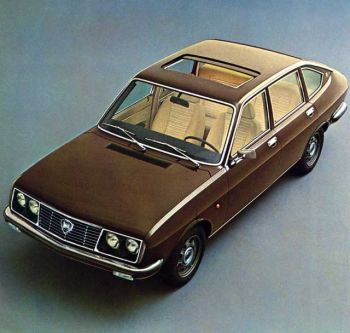 |
|
Gobbato’s tenure at Lancia oversaw the successful
launch of the acclaimed Beta family. Developed from a clean
sheet of paper in less than three years and kicking off with
the launch of the Berlina model at the Turin Show in
November 1972, the Beta range would eventually grow to
encompass Coupe, HPE, Spider and Montecarlo variants. |
|
|
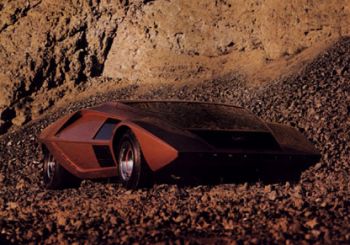 |
|
"At the Turin Show, late 1970, Nuccio
Bertone introduced a new car that was called
Stratos," recalled Gobbato. "At first sight,
I realized that we had found exactly what we
needed. In the first version Bertone had
fitted a Fulvia engine and the car was
clearly underpowered. Bertone himself had
driven the car to the Lancia main factory
and it was not easy for us to remove him
from the cockpit. It was equally difficult
for me to reach the driver's seat." |
|
|
|
Pierugo Gobbato, a talented engineer
turned executive who was known for constantly striving
to push the boundaries of engine technical development,
best-known as ‘father of the Stratos’ during half a
decade in charge of Lancia, has died in Turin at the age
of 90. Gobbato enjoyed a long and influential career
right at the heart of the Italian automotive industry
during its heyday which took in spells with the Fiat
Group and the then-independent Ferrari.
Born in Florence on June 18, 1918,
Gobbato first made a name for himself in the post-war years
during a decade-long stint at ‘Motori Marini Carraro’ in
Milan, where he helped push forward the development of
‘Diesel Veloci’ (high-speed diesel engines), developing
units that were considered revolutionary for the era. Moving on, in 1955, he took up a position with another
important Italian marine engine company, Grandi Motori
Marini, and continued his groundbreaking development work.
This depth of cutting-edge diesel engine
knowledge took him onto SPA in Turin which produced trucks,
buses and tractors, before progressing to the Fiat Group’s
similar division where he was immersed in its agricultural
machine sector. At the end of 1961 he returned to his first
home, Motori Marini Carraro, where he oversaw its
controversial union with OM.
A change of course saw Gobbato becoming
the General Manager of Maranello sports car maker Ferrari,
from 1965 until 1967, where he quickly became an influential
player in the inner circle. In 1969 he was one of the
facilitators of the sale of 50 percent of Ferrari to the Fiat
Group, Gobbato using his close links with both Enzo Ferrari
and Gianni Agnelli to help broker the deal.
Probably the period Gobbato is best
remembered for though is his stint in charge of Lancia where he is
respected by enthusiasts the world over for driving the
fabulous Stratos project to fruition. In fact his
association with the Lancia marque had started many years
before. Twice times as a youngster he contested the Mille
Miglia at the wheel of a Lancia: after piloting a Fiat 508CS Balilla Sport in the 1937 edition of the famed Italian road
race, he switched to an Aprilia the following year (shared
with Enrico Nardi), and contesting the race again in 1952 in
an Aurelia B21. From Ferrari, he had switched to the Fiat
Group, taking up an administrative role in the service
division, and when the takeover of Lancia by Fiat was
concluded in October 1969, the patronage of Gianni Agnelli
saw him handed the General Manager’s role.
It was a big task, with Lancia lacking
direction and having fallen away from its historical
cutting-edge technical position. Sales were also
plummeting, which left Gobbato with the mammoth undertaking
of reviving the company and planning for its future. “In
1969, Fiat purchased Lancia and I started my work in the
newly-acquired company,” he recalled. “The situation was
dramatic. Low sales, sound but old-fashioned cars, no plans
for the future, both in car and in truck departments. I realised at once that the best thing to do was to use what
was really working: the racing department. At the time they
were contesting in the rallies with good results, using
specially prepared Fulvias. Other car manufacturers however
were working on new models and the hopes for the future were
low.”
And so, casting his eyes around the
decrepit company for any bright spots to build on, he found
its only ‘extravagance’ in the competition department, HF
Squadra Corse, headed by the experienced Cesare Fiorio. In
1972, and with the Stratos project already gaining momentum, Sandro Munari pulled off a startling and unexpected victory
on the Rallye Monte Carlo with the by-then ageing Fulvia,
and this had the effect of galvanising support within the
company for the rally programme, strengthening Fiorio’s
hand. As a result, after numerous talks with Fiorio, Gobbato saw
excellence on the rally stages as the logical way forward. It was an astute decision that saw an era of unparalleled
success in rallying ushered in, with the frenzy of winning
going hand-in-hand with Lancia’s revival.
The amazing Lancia Stratos is the car
that Gobbato will be forever synonymous with, an extreme
road and rally car that transformed the image of the
venerable marque, restoring its venerated status. At a
conference in Milan in March 2000, Gobbato recalled the
project: “At the Turin Show, late 1970, Nuccio Bertone
introduced a new car that was called Stratos. At first
sight, I realised that we had found exactly what we needed.
In the first version, Bertone had fitted a Fulvia engine and
the car was clearly underpowered. [Nuccio] Bertone himself
had driven the car to the Lancia main factory and it was not
easy for us to remove him from the cockpit. It was equally
difficult for me to reach the driver’s seat. While the
final version was presented in various car shows in other
countries, we were working on the car in order to make it
more suited for practical use. The car was difficult mainly
for the driving position and the small ground clearance.
“The Stratos story is not as
straightforward as one might think; we had a lot of
troubles,” Gobbato continued. “The car was born to be a
prototype, to race and win. When the International
Automobile Federation rules were changed and required a
minimum of 500 cars to be manufactured in order to race in
rallies, our problems started.
"We had thought to build maybe nine or
ten cars. Now the situation had become very difficult. And
not everybody in Fiat was enthusiastic about the program.
At the time Lancias arrived first and Fiats second, but they
spent the money. Pressure was made in order to cancel the
whole program. Ferrari himself told me that he had great
difficulties in giving the 500 engines we needed.
“I understood that pressures had been
applied on him. Nuccio Bertone was a great support and
assured me that his plant was ready to build the 500 cars. Then, again, I asked Enzo Ferrari for the engines, but he
told me that he wasn’t able to produce the number required. Then I asked for speaking with Avvocato Gianni Agnelli. I
was sure that he liked the idea of racing with those cars; I
met him on November 7, 1972. I told him of the difficulties
we had met and that I did not understand why it was now
impossible to get the engines. I asked him if I could
solve the problem in another way. Agnelli was surprised and
asked: ‘What do you mean?’
“At the time Fiat had an agreement with
Citroën and Lancia was studying a two-litre car in
co-operation with the French company. Working together was
very difficult, however, and I felt that the cooperation was
nearing the end. Citroen had purchased Maserati some time
before; they had a 3000cc engine, which they used in the Merak, that could be put in the Stratos. I was afraid that
‘l’Avvocato’ was thinking to fire me, convinced that I was
mad, but instead he told me to try this way. So I went to
Modena and met Mr Malleret, Managing Director of
Citroën-Maserati, in order to tell him about our idea of
using their engine. He was interested, but told me that had
to talk with the head office in France.
“At the end of November the cooperation
between Fiat and Citroën came to an end. I was worried, but
some days later Mr Malleret called me, saying that
Citroën-Maserati was ready to supply the engines but a
request made by Avvocato Agnelli was needed. I spoke again
to Mr Agnelli, and some days later Maserati informed me that
they were ready to supply not only the 3000cc engine, but
even the 4200, if we liked. In January 1973, I met Mr
Malleret again and we were ready to start the operation. Quickly Ferrari was informed (he always knew what was going
on inside Maserati) and was upset. He called me and said
that his factory was ready to supply the engines. I replied
that I was going in a different direction, but he told me:
‘Oh, no, we were only joking!’
“From that moment on, Fiat had a
different attitude towards our program. Actually, had
things not changed in this way, we would have used Maserati
engines. We started building the cars, which were
homologated (as Grand Touring, Group 4) in October 1974. The inspectors of the Automobile Federation counted the 500
cars that were parked in our Chivasso factory.”
In true Italian style, the Stratos was
immediately out pounding the rally tracks, laying the basis
for a rally heritage which would latterly include the 037
Rally, Delta S4 and Delta integrale – three decades of
stunning rally success at the very highest level that
returned the marque to its rightful position of global
admiration, cementing competition excellence into its DNA. “During 1972 we worked on the settings and the final tuning
of the car,” Gobbato noted. “The car handled and ran well
but the rear suspension was not completely developed. The
problems we had to cope with weren’t easy to solve: the car
was largely unpredictable in his behaviour on the road. This problem was also detected by Munari, who had to retire
in the first race, the Tour de Corse, run in November 1972.
“The same handling problems, caused by
the rear suspension (that, as requested by Fiorio, allowed
[adjustment of] the rear ground clearance according to road
conditions) were evident in the second race, the Costa del
Sol Rally. Finally we solved the problem with the help of Mr Camuffo and his team. In order to reduce manufacturing
costs, the hub carriers were made in pressed steel sheet; in
operation they warped and the same happened to the lower
arms brackets of the rear suspension. The rubber bushings
were too flexible and caused modifications of the wheel
camber. Soon these defects were eliminated, but it hadn’t
been easy to understand the points at fault.
“The early design of the chassis was
carried on with the help of Mr Di Virgilio, who later went
back to road cars design; his role was taken by Francesco
Faleo, a specialist in the field. At first, we thought to
use double wishbone suspension on all four wheels. The
adoption of the Dino engine, transversally mounted, made
this impossible, and we then used transverse lower wishbones
and telescopic struts.
“After the teething troubles were sorted
out, the car was ready and fully competitive. Munari and
Mannucci won the first race, the Firestone Rally, in 1973. In [the] Targa Florio the car had to race against Ferrari’s
312 P, Alfa Romeo’s 33 TT 12, Porsche’s Carrera RS and other
very powerful and fast racers. The Stratos was second
overall, while the race was won by Müller and Kinnunen in a
Porsche Carrera. Ferraris and Alfa Romeos had to withdraw. Our drivers were Munari and Andruet. When
the driver seat brackets broke, the seat was blocked in the
full rear position. Munari was tall (while Andruet was tiny), so
Munari had to drive for nine out of eleven laps. In 1974,
1975 and 1976, [the] Stratos completely dominated the Rally
World Championship.”
In the midst of
this, Gobbato’s tenure at Lancia oversaw the successful
launch of the acclaimed Beta family. Developed from a clean
sheet of paper in less than three years and kicking off with
the launch of the Berlina model at the Turin Show in
November 1972, the Beta range would eventually grow to
encompass Coupe, HPE, Spider and Montecarlo variants. At a
difficult time for the industry generally, owing to the
global economic problems of the era and particularly the oil
crisis, Gobbato’s steady hand and the qualities of Lancia’s
new midsize car revived the manufacturer’s fortunes, with
the model helping to drive a sales turnaround and paving the
way for the launch of the range-topping Gamma, which would
emerge just prior to the end of Gobbato’s reign.
|